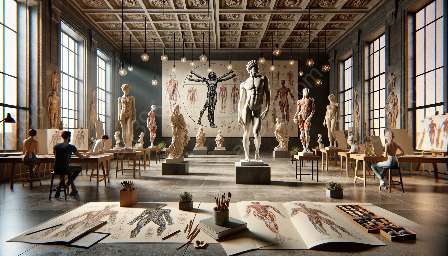The eye is an extraordinary multifaceted organ, effortlessly capturing and interpreting the world around us. Its structure and the surrounding muscles play a critical role in visual perception and expression, making it a fascinating subject that intersects both science and art. Understanding the anatomy of the eye is essential for artists seeking to accurately depict the human form and convey emotion through their work.
The Structure of the Eye
The eye is a spherical organ surrounded by several key structures, including the sclera, cornea, iris, pupil, lens, and retina. The sclera, commonly referred to as the white of the eye, provides structural support and protection for the delicate internal components. The cornea, located at the front of the eye, serves as a transparent window that helps refract light onto the lens. The iris, a pigmented circular muscle, controls the size of the pupil to regulate the amount of light entering the eye. The lens changes its shape to focus light onto the retina, where photoreceptor cells convert it into electrical signals for the brain to interpret as images.
Muscles Surrounding the Eye
The movement and coordination of the eye are made possible by six external muscles that control its position and movements within the orbit. These muscles allow for precise and rapid adjustments, ensuring that the eyes accurately track moving objects and maintain binocular vision. The superior rectus, inferior rectus, lateral rectus, and medial rectus muscles control vertical and horizontal movements, while the superior oblique and inferior oblique muscles enable rotational movements and tilt.
Influence on Visual Perception
The intricate arrangement of the eye's structures and surrounding muscles significantly impacts our visual perception. The ability to focus, adjust to various light conditions, and perceive depth and distance relies on these anatomical features. The eye continuously communicates with the brain, processing visual information and allowing for the perception of colors, shapes, and textures. For artists, a thorough understanding of how the eye functions and perceives the world is crucial for creating lifelike and emotionally expressive portraits and figures.
Influence on Expression
Additionally, the eyes play a pivotal role in human expression, conveying a wide array of emotions and intentions. The surrounding muscles, particularly the muscles that control the movement of the eyelids and eyebrows, contribute to the nuances of facial expressions. Artists can utilize their knowledge of these muscles to capture the subtleties of emotion, such as joy, sadness, surprise, and contemplation, in their artwork.
Artistic Anatomy and Visual Representation
By integrating a comprehensive understanding of the eye's structure and the muscles that govern its movements into their artistic practice, artists can elevate the accuracy and depth of their depictions of the human form. Depicting the eyes with precision and sensitivity not only enhances the realism of a portrait or figure but also imbues it with a profound sense of emotion and narrative. Through careful observation and study of the eye's anatomy, artists can develop the skills to create compelling visual narratives that resonate with viewers on a deeply human level.
Conclusion
The structure of the eye and its surrounding muscles are intricately linked to visual perception and expression, making them vital subjects for artists to explore. By delving into the anatomy of the eye and understanding its influence on human expression, artists can refine their ability to capture emotion and create captivating visual narratives. Embracing the intersection of scientific knowledge and artistic practice empowers artists to imbue their work with authenticity and resonance, enriching the portrayal of the human form in art.

